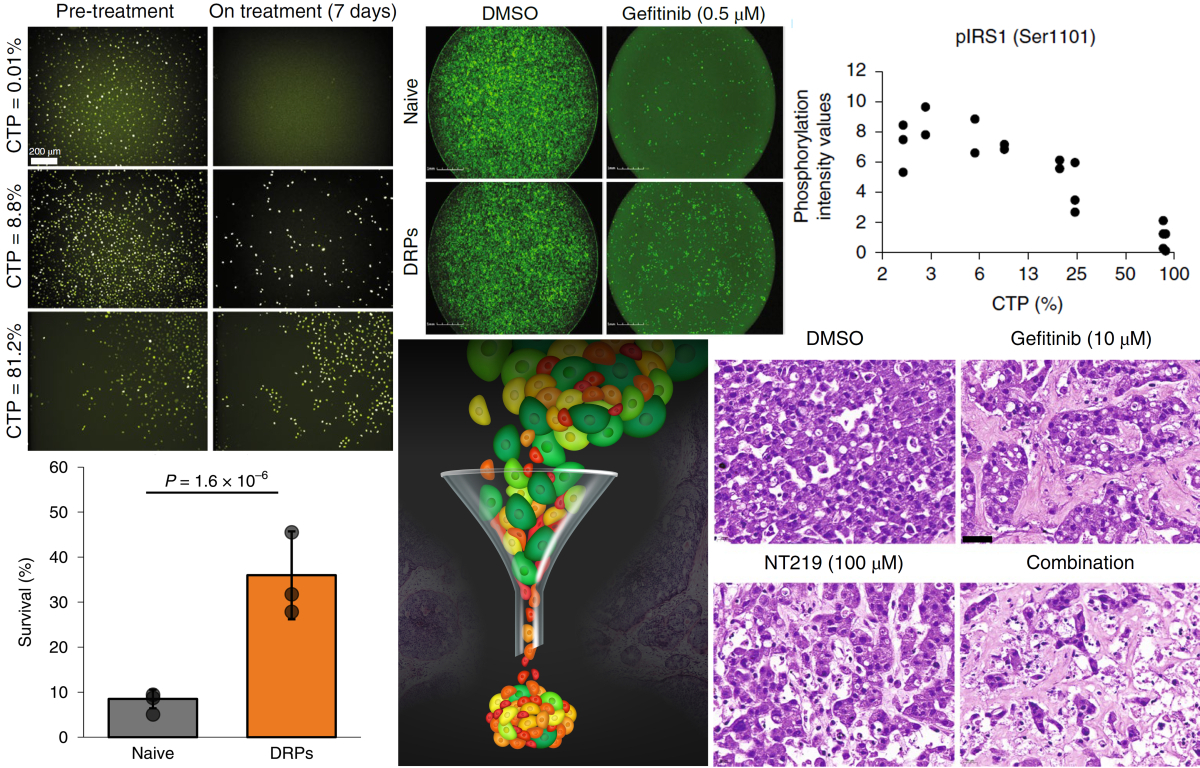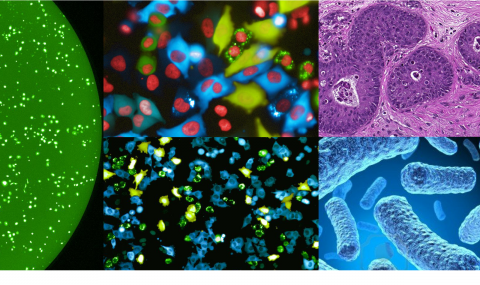Submitted by liann on

Drug tolerant Persister cells were suggested to be a unique, small sub-population of cancer cells that maintain viability under anti-cancer treatments and can give rise to drug-sensitive cells in response to a drug holiday. While these cells do not harbor classic resistance-mediating genetic mutations, such mutations may arise over time in these cells. Therefore, there is a great need to find novel ways to eliminate persisters.
In this study, focusing on EGFR inhibition in NSCLC, we found that unlike the prevailing dogma, every cancer cell has a highly stable chance to persist therapy ranging from 0% to almost 100%. We demonstrated that each cell is ‘born’ with a fixed probability to persist therapy which we named CTP (Chance To Persist). We show that the CTP is highly stable over time and is inherited rather than being stochastically determined when a cell is created. This is what we mean by ‘non-stochastic probability’. Accordingly we demonstrated that each therapy cycle select for cells with a higher chance to persist. Interestingly, the long term memory of CTP was found to be encoded by a post-translational modification: the number of serine/threonine phosphorylations on Insulin receptor substrate 1 (IRS1). Combining EGFR inhibition with a novel IRS1 inhibitor (NT219) was indeed highly synergistic.


